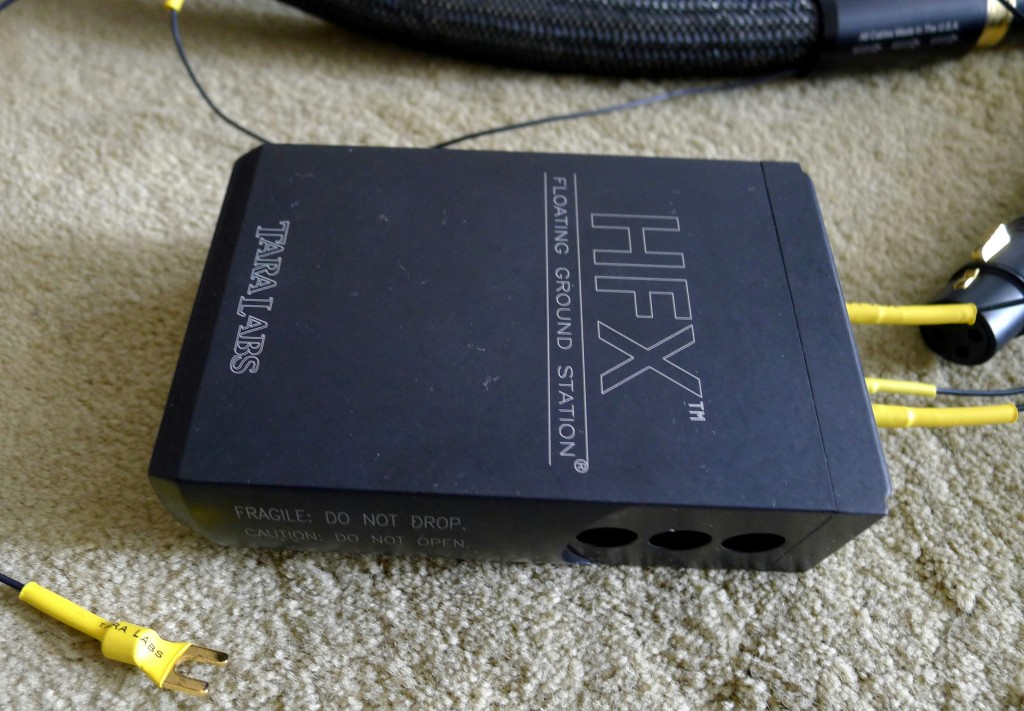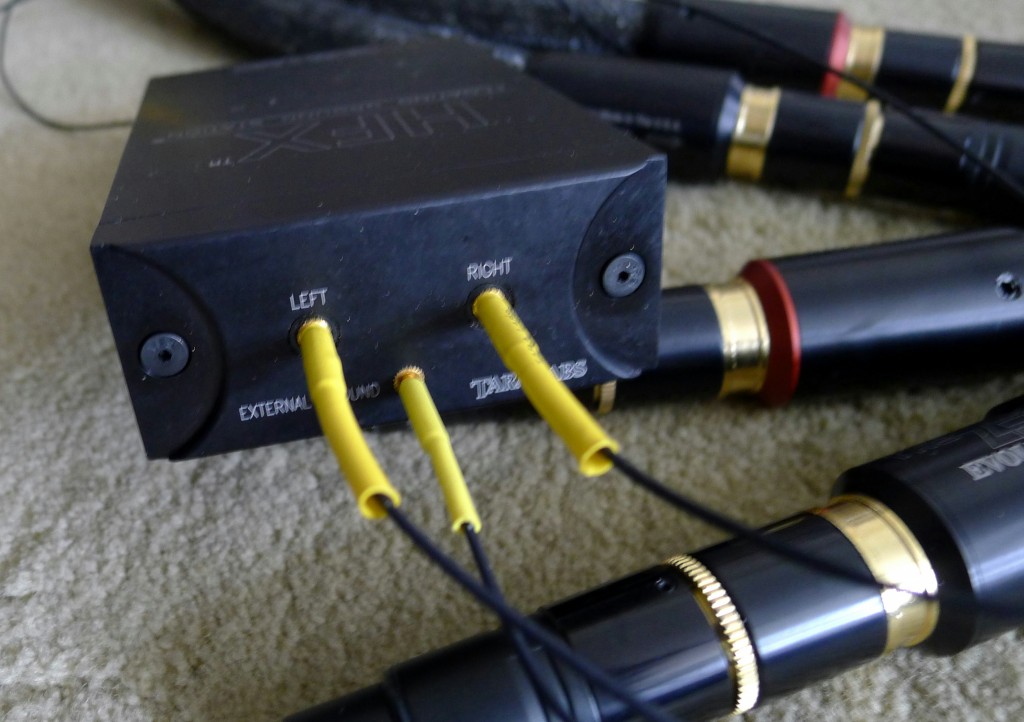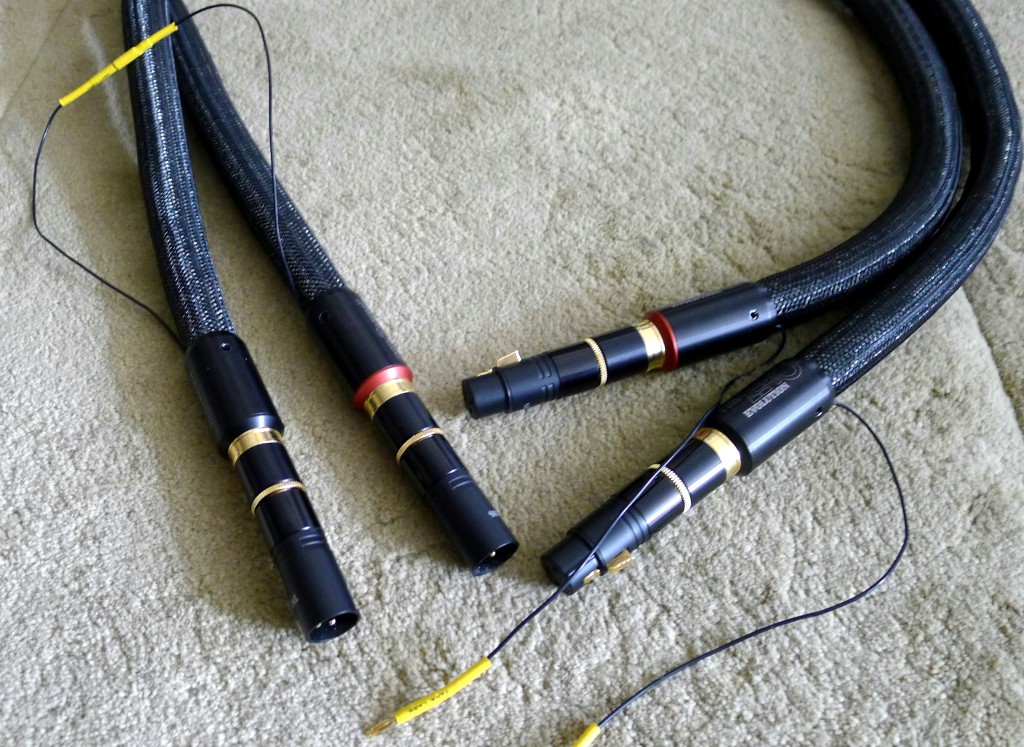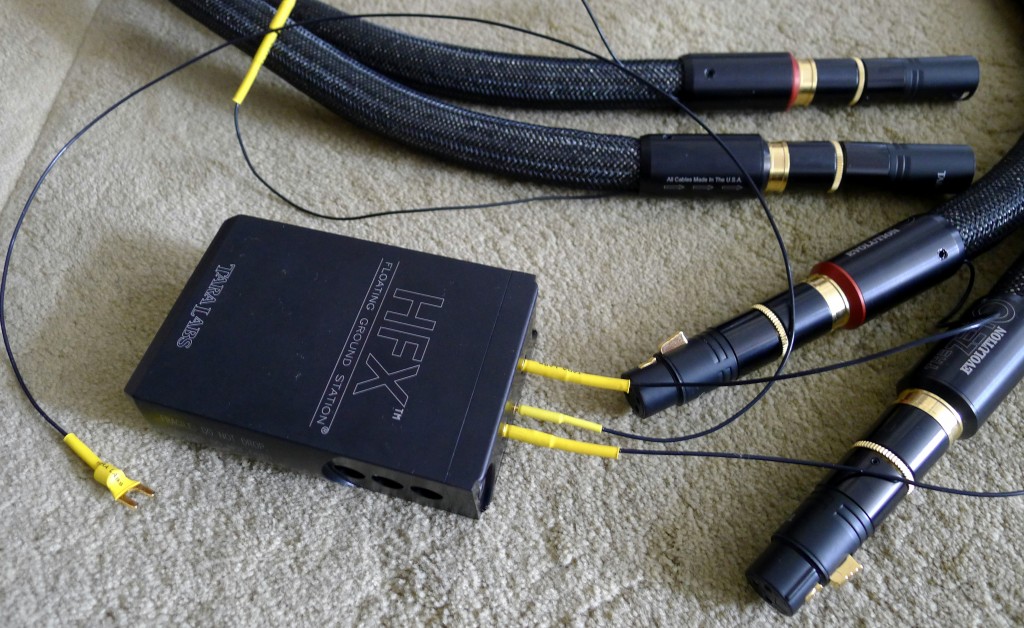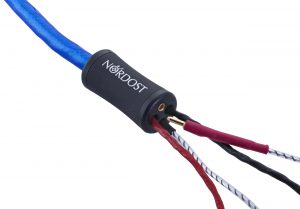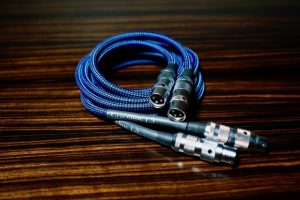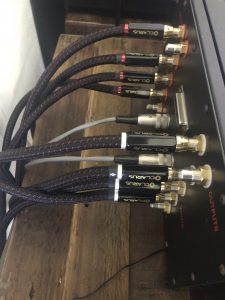Spatial Holography
Last I checked the principles of Newtonian physics still apply. That's why I see my role as communicating the real-life observations that go down in Nack Labs: that's the key—observation and communication. But occasionally stuff happens that falls into a grey zone outside the paradigms we've developed. The problem then is what to do with these phenomena? I've learned to be careful about sharing them. If you tell people, they often react with a discreet glance heavenward. And too many of these shout-outs will get you a reputation.
So, for the most part, I simply file them away under strange. These anomalous events must be experienced firsthand; only then will my visitor share the same look of wide-eyed disbelief.
It happened when the new TARA Labs Zero Evolution Interconnects came in. I was so eager to hear them that I jumped the gun and put them in stream after only 100 hours on my tuner. They were not cooked yet and would need another 50 hours with CD before strutting their glorious stuff. The tuner has limited bandwidth, hence doesn't provide complete burn-in. So I put 'em aside and went about my business.
With everything back to normal, the odd thing was in the subsequent days I kept commenting about how good the system was sounding. Something was up.
FGS Observation
Then it dawned on me. The Zero Evo interconnect was off on the side, but the Floating Ground Station (FGS) that comes with it was in. The FGS is a small outboard box, part of TARA's ground noise solution, and its ground pin was still attached to the chassis of my DAC.
Hmm. Sure enough, as soon as I unplugged the FGS my contentment evaporated. Now we were really back to status quo.
On another occasion, one Sunday morning I put on Beethoven: Violin Sonatas (HMG 508398) to start the day with some casual listening. The reference system was in place—I made sure both the Zero Evo and FGS were off on the side. Lynn inquired who was playing. Well, now that the system had her attention, I figured I'd press the advantage, and suggested we do a quick cable comparison.
I closed the curtain to cover the front window and turned on the Halogen torch. We settled into the sweet spot and I pressed Play.
"I don't like this cable, it sounds edgy," came next. Wait a minute! I hadn't changed anything. And, yes, I heard it, too—a slight electronic hash on the transient. I looked around. My gaze settled on the Halogen. These lamps, especially on dimmers, are known to be noise generators. Mulling it over, the little FGS box popped into my mind. This time I went behind the rack and purposely attached its ground pin to the chassis of my DAC. Yup, the electronic hash got zapped.
Jeeze, this FGS box is quite a tweak all on its own.
Ground Noise Reduction
It seems everywhere you turn these days, the creative minds of the High-End are hard at work tackling this grunge that everybody has, only most don't know it. Ground noise is real and it can be big, depending on where you live. (Cities are worse than suburbs.) And, as you would expect, the creatives are coming at it from all different angles. I just wrote about a power cord from Dynamic Design Corp with an external battery pack whose purpose is to build a protective shield against it. Synergistic Research is another company producing something called a Grounding Block. Finally, the other day I read a review about Entreq, a company devoted to grounding solutions. All over the High End, engineers are in hot pursuit.
The TARA Labs Solution: True Floating Ground
TARA Labs has been on the case for as long as I can recall. In 1992, TARA invented the idea of using small leads to connect the left and right channel shields of signal wires. By the mid-1990's, they came up with the idea of using an outboard Floating Ground Station (the FGS) attached to the cable with small leads.
The HFX FGS Ground Station
The Zero Evo interconnects have pigtail sproutings on both ends. At the load end, mating mini-pins lock together. At the source end, mini-banana pigtails plug into the outboard HFX FGS. Thus, the ground wire is lifted on both ends. This comprises a true floating ground. The HFX FGS, in turn, connects to the ground post on your preamp with mini-pins.
Inside the Floating Ground Station there's a patented noise reduction compound called Ceralex. Whatever EMI/RFI is riding along the ground wire is dumped into the FGS and then absorbed by the Ceralex. The Floating Ground Station doesn't change tone or timbre but makes everything clear and sharp, beefing up resolution and reducing treble stridency.
Note: The ground station that comes with the Zero Evo has been improved and renamed the High Frequency eXtended Floating Ground Station (HFX FGS for short).
Cable Technology
That addresses the issue of ground noise. As for the cable itself, a white paper on TARA Labs' website states the mission:
The best interconnect would comprise a pair of signal carrying conductors suspended in air… (The) air-tube design is unique in that it has internal galleries or arteries that run along the inside walls of the tube. These galleries… hold conductors.
More from the website:
The Zero Evolution design supersedes the Zero Gold with a 75% increase in bandwidth, in addition to an incredible 2.5pf, resulting in a vanishingly low noise floor that creates the widest dynamic range possible. Our SAOF-8N 99.999999% inline polished conductors use our new proprietary Liquid-film™ dielectric. The Zero Evolution also includes our new flexible air-tube technology and design.
To begin, let's cue up Piano Concerto No. 2 by Rodion Shchedrin, the enfant terrible of contemporary Russian composers (Hyperion SACDA67425). Shchedrin likes to jump around, often leaving no obvious links amongst his thematic material. Just what he is getting at is elusive. He can seem bipolar, but the composition does have its attractive moments. Let's just say Shchedrin is an acquired taste.
The third movement begins quietly, with soloist Marc-André Hamelin sounding note intervals that come off rather like a technician at work tuning the instrument. Violins hover on the left behind the piano, a large section of many players; the low strings come in powerfully on the right. Then a loud blast from the brass abruptly shatters the low-key mood and announces a new motif, and the piano takes off on dizzying allegro scale runs.
Out of nowhere, the score turns into a little jazz riff reminiscent of Bernstein's Prelude, Fugue and Riffs, a groove laid down by piano, double bass and full trap set. Now the mood is an intimate jazz club. This is midway into the movement—where'd that come from? And so it continues, quite the pastiche of alternating themes.
Space and Dimension with No Barriers
Of interest to us, however, is the resolution of space on this recording; it is something else. With a full loom of the TARA Zero Evo interconnects and HFX FGS—one length of balanced cable between the CH Precision C1 DAC and the L1 Preamp and a second from the L1 to the Audionet MAX Monoblocks—the perspective is quite close, like a first-row orchestra seat The sections of the orchestra are laterally spread out and layered in receding rows approximating the layout of a real stage. It is about as wide and deep as it gets in my room.
The full-blown Zero Evo effect is dramatic, like you have on X-Ray goggles and can see how the whole thing is organized. It's defined to the max in all directions—left to right, front to back, up and down—and detailed, detailed, detailed.
And not a bit of it, not even the tiniest square footage, is blurry or vague. Detail builds upon detail. Every instrument has its own space and fits in with no overlapping, like pieces in a 3-D puzzle. The thing is so solid and images are so precisely positioned it has the aspect of a large piece of aural sculpture.
I've heard wires and components create aural sculpture before. The trick is to avoid heaviness. If the sculpture gets too heavy, the images become anchored to the spot, too weighty and stiff to move. The instruments come to resemble tombstones and the stage becomes a graveyard.
There's none of that here. The Zero Evo images are limber and flexible enough to dance. There is no problem with musical flow.
Aural Thrills
Different instruments excite the air in varying ways. A brass instrument has an entirely different wave-front than a violin, while a flute is unlike either of them. And they change when playing low or high in their range. A flute in its upper range is a point source. As it plays lower, it spreads and gets broader, less focused. A trombone presents a smooth bell-like tone within a large, diffuse image, but at times it can have a jagged, brittle texture.
This presents a major difficulty for audio products. The majority of cables and components give everything the same shape, i.e. the image of the trombone and the violin look the same on the stage. Better quality cables give instruments suitable shapes. But very, very few are able to change the instrument's shape as it plays through its range over time.
Timbre
Timbre is analogous to imaging. All cables give you the basics—then it's a matter of how close they come to real instruments. The closer they get, the less your brain has to fill in and the more beautiful it sounds. The ideal wire would have a vast palette at its disposal and make each instrument sound unique.
In these two areas—how it parlays image shape and renders timbre—is where the Zero Evo gives the biggest thrills. It does the shape-shifting imaging better than any other product. And instruments are wonderfully, clearly seen with unique colors and hues. The cable has the widest timbral palette available, and because its footprint is minimal, it lets the signal through unimpeded. No, it will never sound lush, but it does sound uncannily true to life. The Zero Evo portraits mimic acoustic instruments played in a good hall.
Compared to Prior Zero
It's been several years, so I can't be sure about this, but I remember being struck by this same top-level fidelity in the prior Zero Gold cable. And TARA claims a lower noise level for the Zero Evo. Well, the prior Zero was already so noise-free as to make it unnoticeable. You can't improve on that. Subjectively speaking, this again seems on par.
However, the new Zero Evo does get one up on the prior cable in the crisp articulation of the transient. This new cable has the fastest, cleanest transient I've come across, with absolutely no grain or edge marring its excellent delivery. Every frequency is perfectly aligned and that allows transient edges to come into view, revealing fine details of texture.
The Zero Evo uses premium quality materials and construction and its appearance is very similar to the Zero Gold product. It's still a thick tube, much more robust and bulked-up than other TARA interconnects like the 0.8 series, and it is quite light-weight. But, there's one major functional difference: happily, the new product is very flexible and much easier to deploy.
All TARA cables are made by hand in Oregon, USA.
Conclusion
Generally speaking, today's audio cable products fall into two camps: those that emphasize beautiful sound and those that strive for ruler-flat neutrality. But what's really needed is a mutant breed that is able to deliver on both fronts.
That's where the new TARA Labs Zero Evolution interconnects fit in. This cable is decisively in the neutral camp. However, it has unsurpassed timbral fidelity and characteristics like liquidity and ease, all of which I associate with the musical camp. But the beauty of their sound does not impair their passing an incredible amount of information. Their resolution of valuable, low-level stuff is probably more than you've encountered.
When this wire speaks, you have confidence it's on the mark: there's no need to second guess its veracity. Questions of balance and accuracy fade away, and its level of truth is unquestioned.
With the Zero Evolution Interconnects, you zoom up to a state-of-the-art wire product. Recommended without reservation for the most discerning listeners.
The Zero Evolution Interconnect w/HFX
Retail: $18,000.00/meter
TARA Labs
Late Breaking News:
In line with TARA Lab's philosophy:
To really know what high-end audio cables will sound like in your audio system, you need to bring it home and try it out for yourself. Your components, your home, your music!"
Effective immediately, TARA is instituting a Home Loaner Cable Program. The loaner-program will make the majority of cables available (excluding entry level cables) to anyone who wants to listen to them in their own home, with no obligation to buy.
For more information contact TARA Labs.







